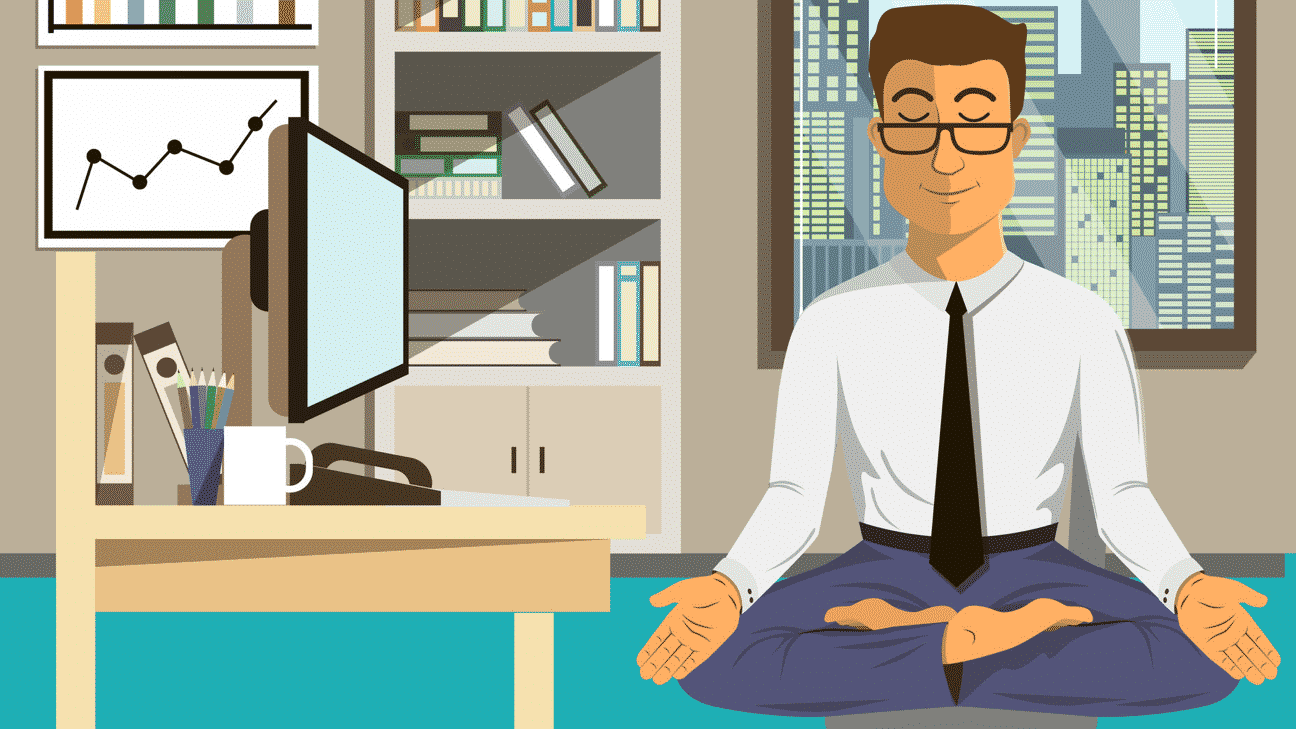
Programming software takes a tremendous amount of focus and effort. Working hard to transform code into software is an exciting feeling. It’s easy to get lost in your work as the hours fly by. I’ve done this many times.
However, writing code can also be frustrating in many cases. I’ve been a programmer for many years, and I still spend hours debugging. Most of the time this level of debugging requires sitting down and focusing. After many years of this, you will be a prime candidate for back pain and repetitive stress injuries. I’ve found a way to prevent this from happening.
To avoid these types of health issues, you should take breaks for stretching and practicing yoga. Stretch breaks and yoga are especially important for programmers who sit in front of a computer for many hours. Spending a few minutes to do stretches during working hours can relieve stress, boost productivity, and undoubtedly make you feel better.
This didn't happen when I started my career. I realized I needed to stretch after trying a lot of other methods (i.e. Chiropractor, painkillers, x-rays, massages, exercise) but none of it solved my problems. At one point I couldn't stand up straight because my back locked in a sitting position. It wasn't until I watched a ballet dancer doing stretches that I realized that maybe stretching could be the solution to my problems. The first area that I focused on at this point was my hamstrings. I learned the standing Hamstring Stretch from watching a ballet dancer. After doing it for 2 days my back pain went away.
In this blog, I will share my stretch guide along with some yoga poses that will help you relax stiff muscles while making you feel good:
Stretches for Programmers
Stretching is one of the most relaxed and easiest things that you can do on a regular basis without having to buy any expensive equipment. Unlike several other physical activities, you don’t even need a trainer or partner to stretch. Before we go further, let's understand a profound concept of stretching and muscle trigger points pain:
Trigger Points
Trigger points are sensitive spots in our body which creates pain and dysfunction within the muscle leading to myofascial pain syndrome. Myofascial pain often occurs due to excessive sitting, repetitive strain, muscle injury, structural imbalance, or no stretching before/after physical activity. When a muscle is injured or overused, a contraction develops and knots occur. These muscle knots reduces blood flow resulting in a decreased supply of oxygen and accumulation of metabolic waste. The oxygen starvation and waste products of metabolism irritate the trigger point which responds to this immediately by sending out pain signals. The key point of stretching is to treat trigger points that develop from being in the same position for long periods of time and other reasons.
Here are a few simple stretches that can help you treat those trigger points and maintain physical flexibility:
Hamstring Stretches
Tight hamstring muscles may lead to severe strains and give you back pain and other critical postural issues. Well, regular stretching can help you heal tight hamstrings and improve your flexibility. There are several techniques to stretch the hamstring muscles; some of them are listed below:
â— Static Stretch Seated
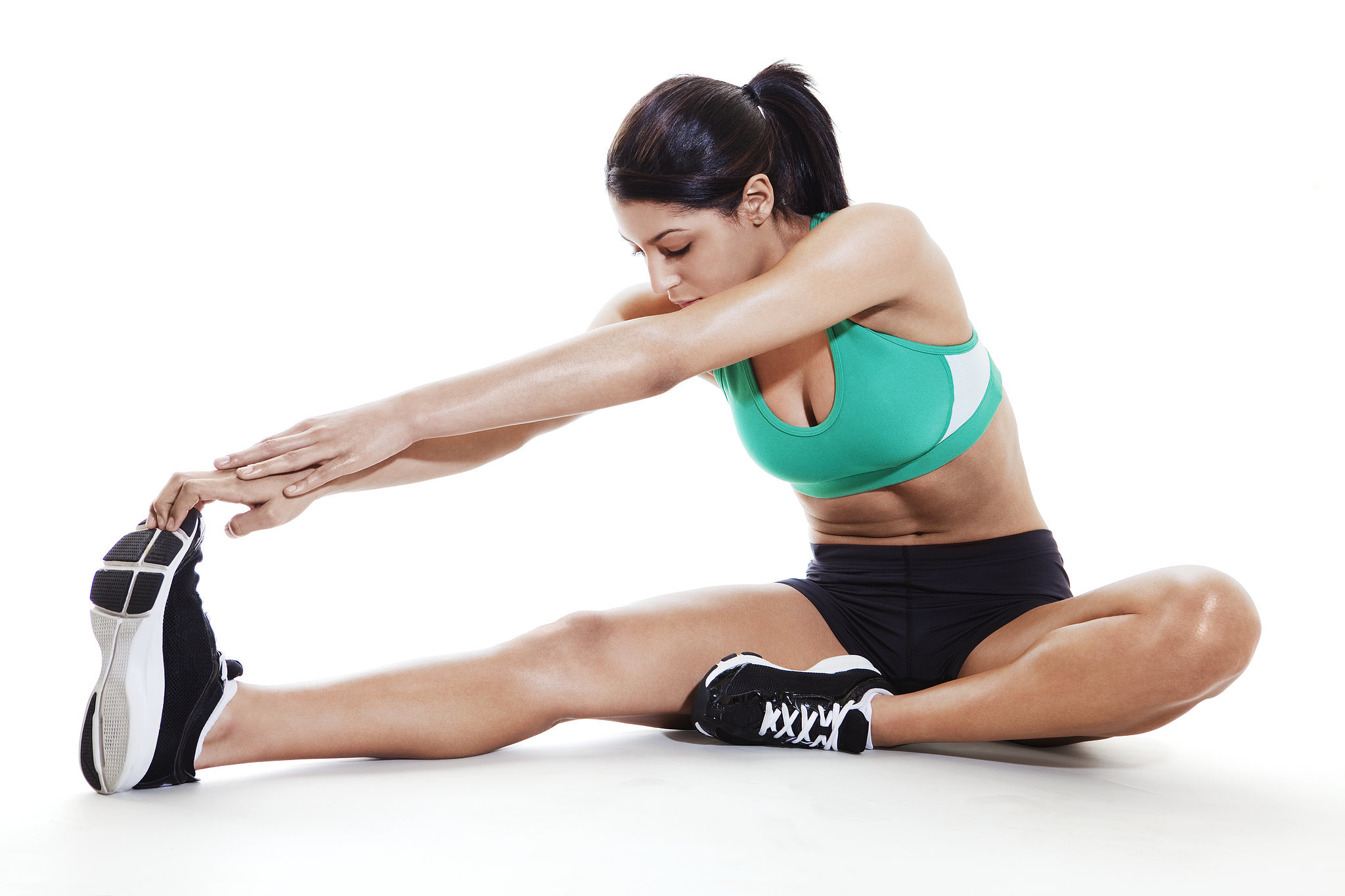
➢ Sit on the mat and stretch out your right leg straight and bent the left one as shown in the image.
➢ Now, rotate your right leg inwards and lean forward at the hips. Try to touch your right toe and feel the stretch under your thigh. Hold the position for 30 seconds.
➢ Now, repeat the stretch on the opposite side for the same amount of time. Repeat the set for 3-5 times.
â— Hamstring Stretch on the Back
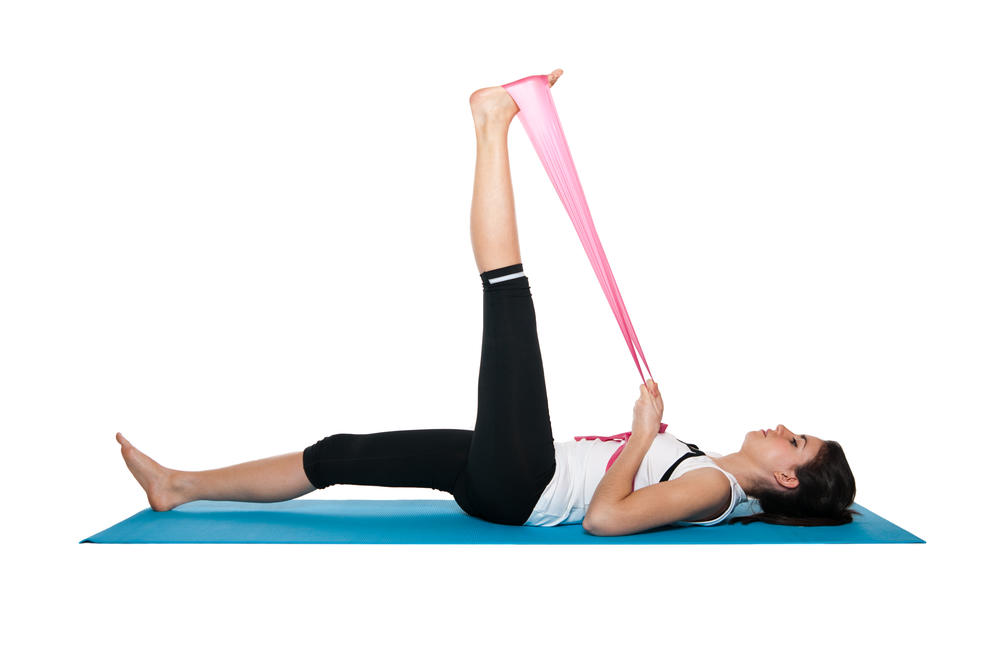
➢ Lie down on your back and straighten the leg upwards as high as you can. Make sure to keep your pelvis flat on the mat.
➢ Now, hold your lower thigh and support the leg to move towards your head. Here we are targeting the muscle fibers next to the knee and calf. Hold for 30 seconds and repeat with opposite leg.
➢ You can also try this using a towel or resistance band as mentioned in the image above.
â— Standing Hamstring Stretch
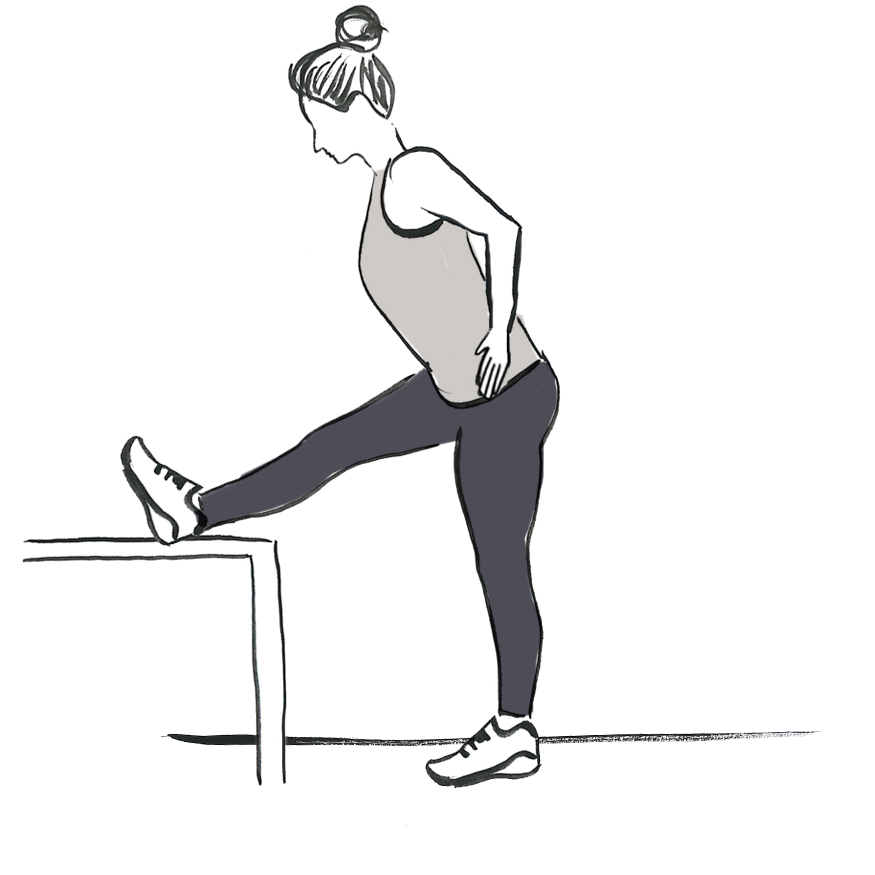
➢ Stand in front of a stool or any other object (box). Now, place your right foot on the object and start leaning forward from the hips.
➢ You need to keep the outstretched leg straight. The standing leg can be slightly bent. Don't try to touch your toes while doing this stretch. Instead, you can hold your waist. Hold for 15 seconds.
Now switch the legs and repeat the movement. You can repeat the set 3-5 times.
Stretches for Neck & Head Muscles
Whether you have been sitting in front of a computer for many hours or slept in an unusual position last night, neck pain may occur. And a pain in the neck is not only annoying, but it can also lead to upper back pain and headache. Well, you can get rid of such problems by doing some simple yet effective moves.
In order to relieve the pain, try out these groundbreaking stretches:
â— Seated Neck Release

Sit on a mat in a cross-legged position as shown in the image. You can also sit on a chair with your feet flat on the floor. Make sure to keep your spine straight.
Place your left palm on the top of your head and inhale. Now, slowly tilt your head to the left with exhalation. Here, you also need to apply gentle pressure with your palm to give a deeper stretch. Hold the position for 30 seconds.
Now, slowly lift your head up and release your hands. Repeat the same posture on the other side. You can do 4-5 sets.
â— Seated Clasping Neck Stretch
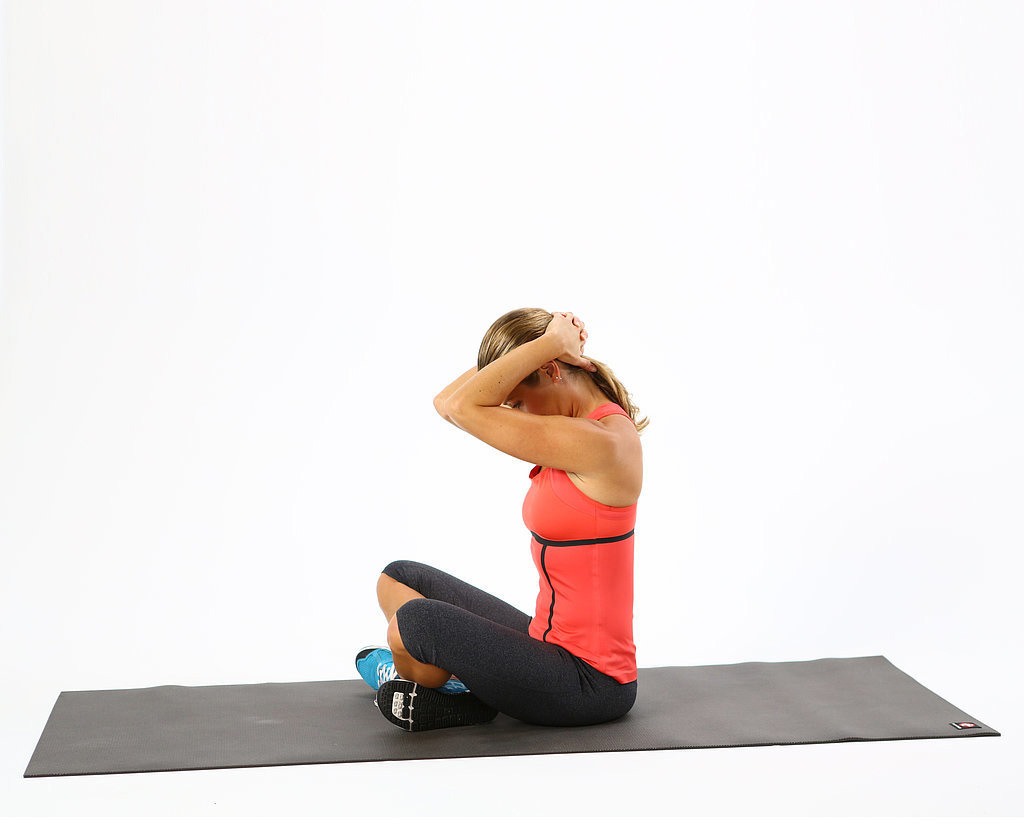
➢ Sit on a mat or chair and keep your spine straight. Now, clasp your palms together and place them on the back of your head.
➢ Now, gently press your palms down toward your thighs while tucking your jaw into your chest. Hold in this position for 30 seconds.
➢ Now, lift your head up and release your hands. Repeat the same stretch for 5 times.
â— Behind the Back Neck Stretch
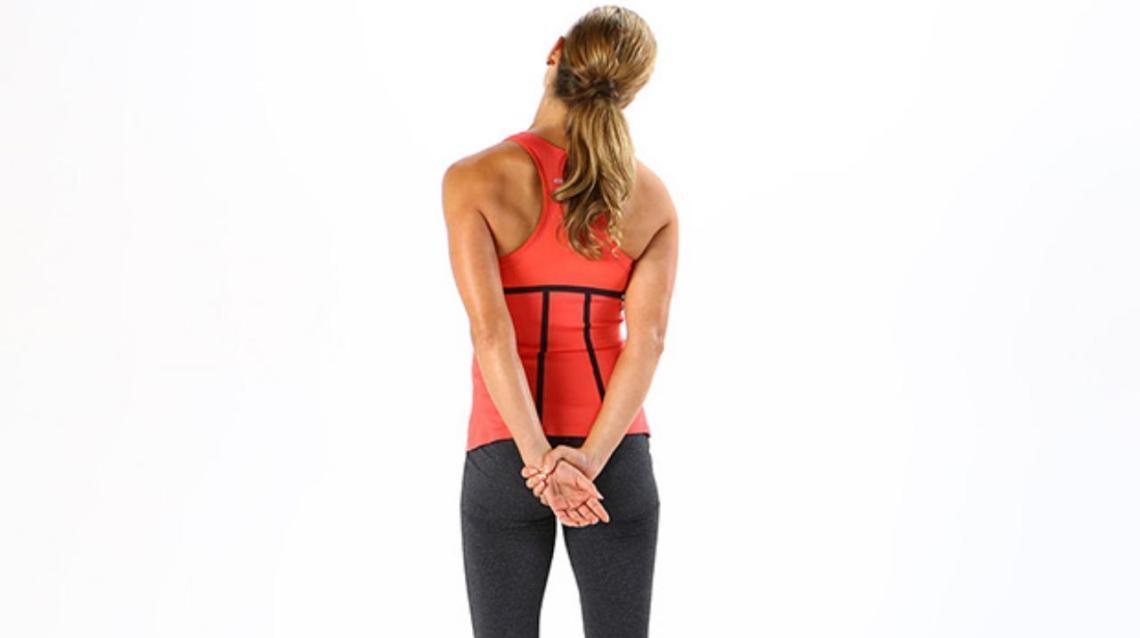
➢ Stand with your legs parallel and hip distance apart.
➢ Now, reach both hands behind your back and hold your left wrist with your right hand. Here, you also need to straighten your left hand by gently pulling it away from yourself.
➢ In order to intensify the stretch in your neck, slowly tilt your head towards your right shoulder. Stay in the position for 30 seconds and repeat the same on the other side.
You can do this standing stretch anywhere to give a deeper stretch to your neck. The stretch can also be performed by sitting on a stool.
Before performing all these stretches and postures, you can also take a hot shower that will loosen your muscles and give you instant relief.
When to Stretch?
Stretching is an effective way to stay loose and relieve the stress of everyday life. Each stretch mentioned above should be performed twice in a day for 510 minutes each (once in the morning and once in the evening). Make sure to drink a lot of water to help your muscles get their elasticity back. If possible, you can even take a break in your working hours and stretch out to instantly get relief.
Yoga Poses for Programmers
Yoga not only relieves the muscle pain but it also boosts your physical strength which is required to prevent injury, improve the immune system and make everyday tasks easier. A morning yoga practice makes your breath, blood, and muscles moving well before breakfast, allowing the nutrients from your diet to be completely absorbed. I have been practicing yoga for many years and I am well aware of the advantages associated with it.
Here, I am explaining 3 yoga poses that every programmer must perform in order to stay fit and relieve muscle pains:
â— Forward Fold (Uttanasana)
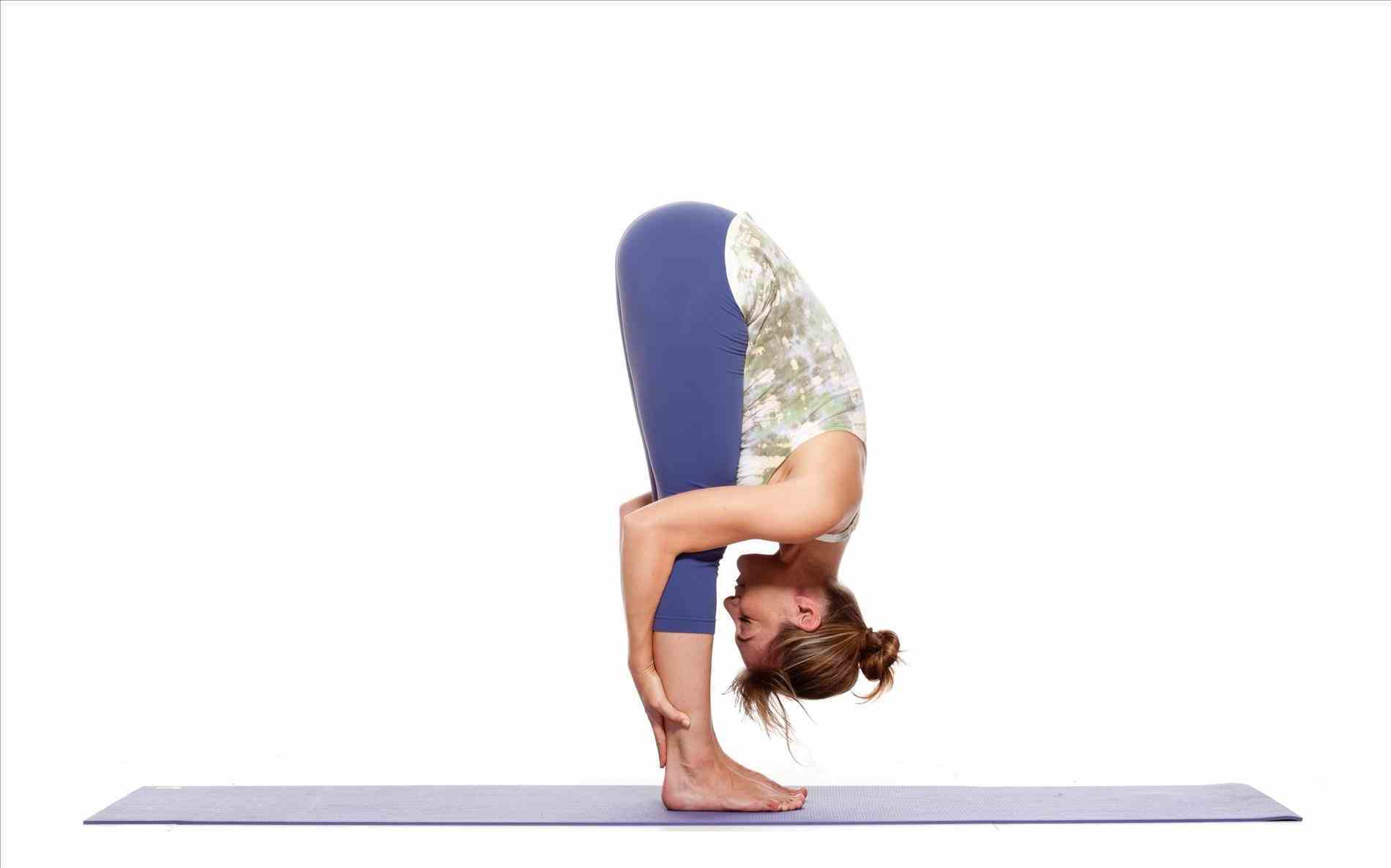
Forward Fold helps with compression of the spine while stretching and rejuvenating your whole body. When practiced correctly, this yoga pose is an intense stretch which effectively stimulates your hamstrings and back. In this pose, your head goes below the heart which allows blood circulation in your head, providing your cells with energizing oxygen. It also makes your spine strong and flexible while improving your digestion.
How to do it:
➢ Stand tall with the feet parallel, rest your hands on your hips, and inhale. Now, slowly start folding forward from the hips while exhaling. Here, you need to keep your stomach slightly in and focus on expanding your front torso as you go deeper into the position.
➢ Keep your knees straight and try to touch the back of your ankles with your palms. Let your head hang loose, releasing all tension in your shoulder blades and back. Stay in this position for 30 seconds to a minute.
➢ To come out of Forward Fold, take your hands back to the hips and slowly rotate at the hip joints until you stand tall. You can repeat the pose for 4-5 times.
Note: If you are a beginner or have lower back pain, you can bend your knees. As you progress, try to keep your knees straight. Forward Fold must be relaxing and comfortable — avoid pushing too hard.
â— Cobra Pose (Bhujangasana)
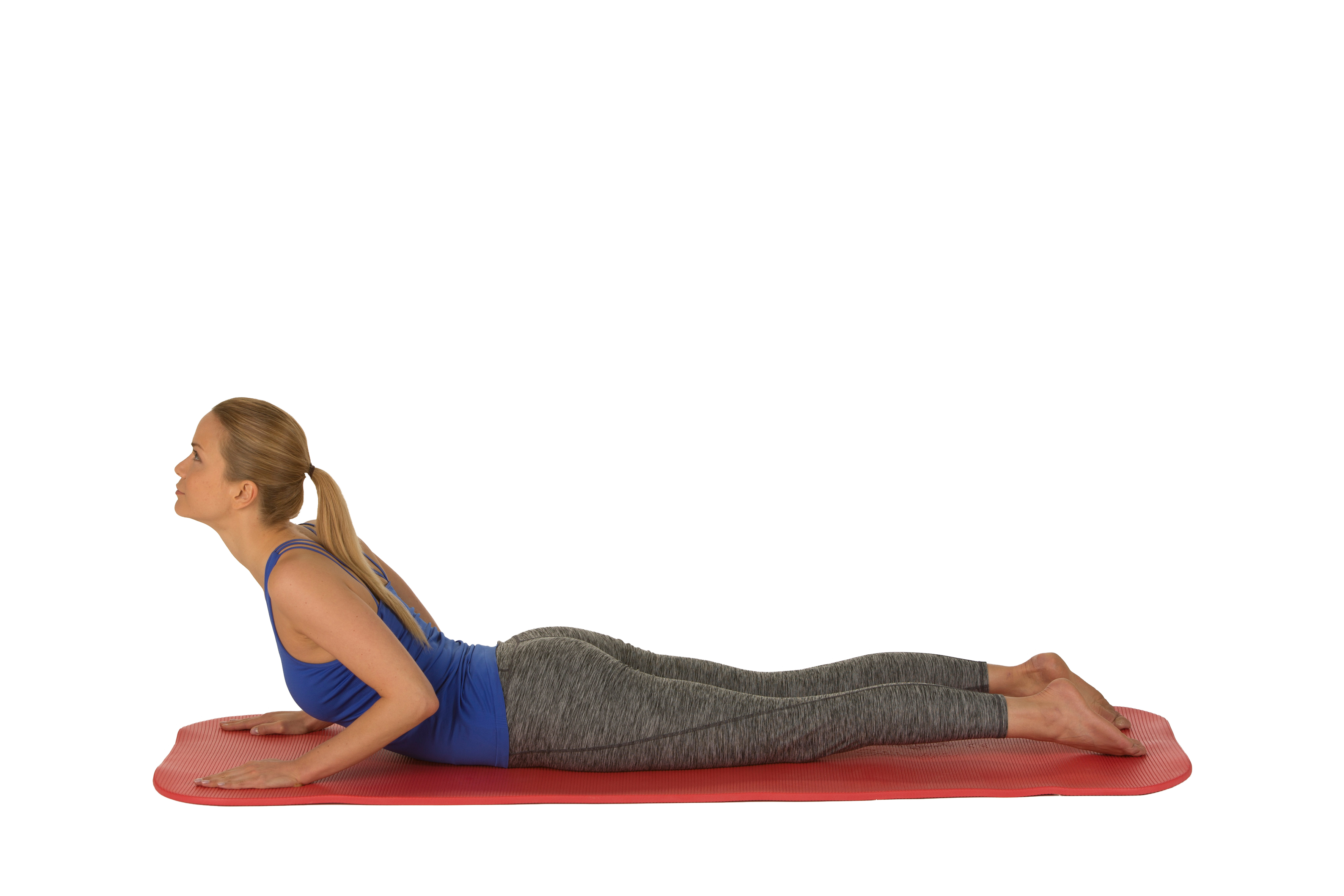
Cobra Pose is known for its ability to enhance the flexibility of the spine. It strengthens your entire back and shoulders while improving the flexibility of the upper & middle back. When practiced correctly, it improves blood circulation and helps reducing fatigue and stress.
How to do it:
➢ Lie down on your belly with your forehead resting on the ground and toes flat on the mat. Make sure to keep your legs close together. Now, you need to keep your palms downwards under your shoulders while keeping your elbows close to your torso.
➢ Inhale and slowly start lifting your head, chest and stomach while keeping your lower ribs on the floor. Now, pull your shoulders back with the support of your hands without crunching your neck.
➢ If you are a beginner or have neck pain, you should keep your gaze only toward the floor. As you progress, try to bring your gaze to the sky.
➢ Stay in this position for up to 30 seconds and slowly lower your chest and head to the mat while exhaling. Now, turn your head to the right and rest your left ear on the floor, relaxing your arms alongside your entire body. You can repeat the pose for 4-5 times.
Cobra Pose decreases the stiffness of your lower back while relieving stress and fatigue. It also improves circulation of blood throughout the spinal and pelvic regions. A must try yoga pose for all the programmers.
â— The Thread the Needle Pose (Parsva Balasana)
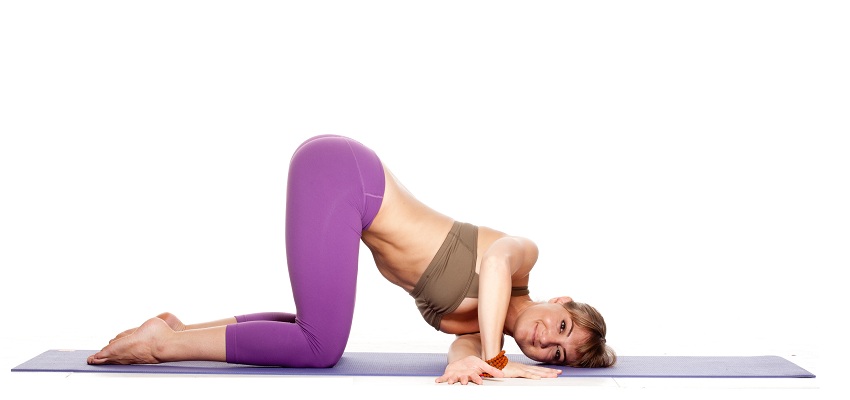
Thread the Needle pose is a wonderful posture which stretches and opens the neck, shoulders, arms, chest, and upper back. It helps you release the stress which is generally held between the shoulder blades and upper back. Thread the Needle pose detoxifies your body and transfers fresh blood to your upper extremities.
How to do it:
➢ Come into a tabletop position with hips over knees and shoulders over wrists. Center your head in a neutral position while looking downward.
➢ Now, inhale and slowly slide your right hand underneath your left hand with your palm facing up. Here, you also need to let your right shoulder to stretch and come all the way down to the mat with the exhalation. Now, rest your cheek & right ear on the mat and gaze toward your left.
➢ Allow all the stress in your neck, arms, and shoulders to drain away. Avoid pressing your body weight onto your head. Stay in this position for up to one minute.
➢ Gently slide your right hand out and go back to the Table Pose. Now, repeat the same posture on the opposite side for the same amount of time.
If you are having chronic back or shoulder pain, you must try Thread the Needle pose. It gives a mild twist to your spine and loosens the muscles while reducing tension. Make sure to concentrate on your breathing while practicing this pose.
What is the Right Time to Practice Yoga?
Though morning is an ideal time to practice yoga, you can choose any time as per your convenience. Noon is not suggested since your body requires a gap of at least 5-6 hours after eating to practice yoga.
Remember, 10 minutes of yoga a day can have positive impacts on your physical and mental wellbeing.
All these stretches and yoga poses are not recommended without expert consultation. Those with critical physical issues or illnesses must consult doctor or yoga instructor to evade any complications.
Author Bio
Isaac Barnes is the co-founder and CTO of Eminent IT; an award-winning information technology firm focused on helping government organizations improve their business processes and technologies. He developed, lead, and implemented over 50 IT projects for the Department of Defense, Executive Office of the President and other organizations over the past 16 years.

Great tips! One of my favorites that you listed is the hamstring stretch on the back with the resistance band! I also like a similar version but in the doorway - with one leg on the floor and the other on the wall.